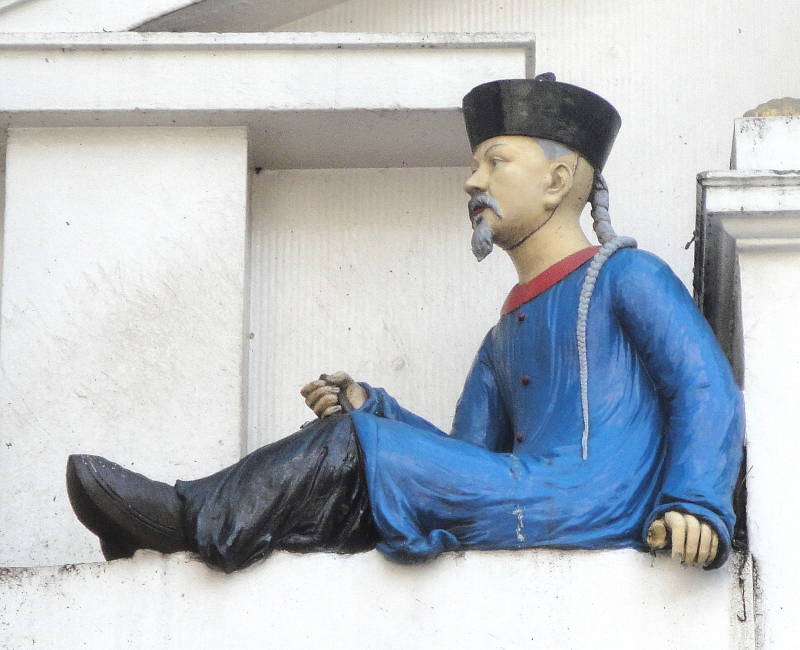
n British Food: an Extraordinary Thousand Years of History, Colin Spencer discusses several reasons that tea drinking became so much more popular in Great Britain than on the continent. He points that at the “beginning of the eighteenth century tea-drinking belonged to the upper classes as a sign of their position and affluence," moving from the “fashionable centres of Britain, to Bath and to York and Edinburgh, then to towns and lastly to the countryside” (216). Not all tea drinkers took tea the way we see it served in England today. Queen Anne, for instance, drank hers strong, cold, . . . and with a little gin. Since the government considered tea an upper-class luxury, it imposed such heavy taxes that a great many people, including ministers of the Church and ministers of government itself, obtained their tea from smugglers. This smuggling became so widespread and so socially acceptable that the government lowered taxes on tea after the first quarter of the eighteenth century.
That fact certainly explains why tea-drinking increasingly moved down the social scale but it does not by itself account for Britons' choice of tea over coffee, which became and remains more popular on the continent and in America. Various political and economnic factors do:
France and Holland had direct access to their coffee supplies through their colonies in Java and the Antilles, while our trade interests were monopolised by the East India Company with its strong China connection. Here in Britain, the image of the coffee drinker had from the very beginning been a highly masculine one, bound up with politics and commerce, and was not easily assimilated into the domestic scene; similarly from the very beginning tea drinking had been a feminine pursuit associated with the decorative arts. [After Pasteur’s discovery of the role germs had in disease] Medical opinion approved of it too, as boiling the water destroyed the bacteria in a very dubious water supply. Tea could also be drunk without milk and the leaves dried and re-used; it had also by 1760 become widely available, and almost a quarter of all shops now stocked it. At Twining’s shop in London (see below), customers could buy from a selection of blends that were mixed in their presence and offered to them for tasting. Tea, in being so acceptable to the growing bourgeoisie, gave respectability, sobriety and an air of authoritative security to the drink. The aura tea possessed was its most powerful attraction to the lower classes. [217]
Soon, however, other factors prevailed, and “labourers,” who believed that “sweetened tea gave them energy” made it an essential part of their meals until “by the end of the century when prices rose because of disastrous harvests, hot sweet tea was a necessity, drunk three times a day with the tea kettle kept simmering on the hob. Labourers were spending ten per cent of their budgets on tea and sugar and only 2.5 on beer” (218).


Twinings's, 216, Westminster, London SW2. Early nineteenth century. British Listed Buildings describes the part of this Grade II structure in the photographs above as a stucco "Tea merchant's shop front. . . Portico to Twining's Tea Warehouse," but it does not tell if the two men and lion were originally painted. Given that much tea came from India, one also expects to see an Indian prepreented, too. [Click on images to enlarge them.]
Sugar, Spencer explains, was added to tea, and as tea drinking spread, importing sugar by more than 400% before Victoria ascended the throne. In the nineteenth-century adding milk to tea became for increasingly common until it became customary to do so.
Related material
- Why did British food decline, and when did it happen?
- The biscuit — from a sailor’s dry bread to delicate pastry at tea
Bibliography
Spencer, Colin. British Food: an Extraordinary Thousand Years of Food. New York: Columbia University Press, 2002.
Last modified 2 May 2020